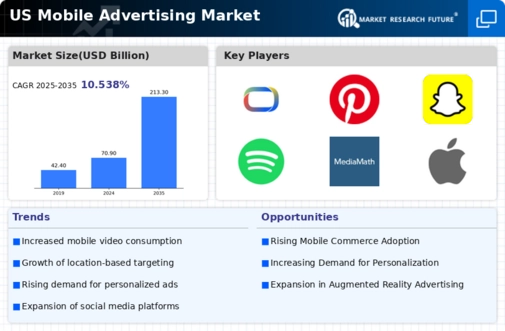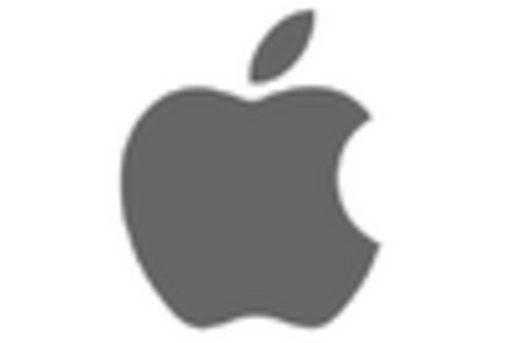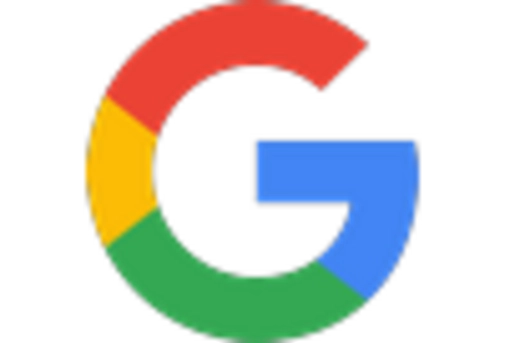Emergence of 5G Technology
The mobile advertising market is poised for transformation with the emergence of 5G technology in the US. This next-generation network promises faster data speeds and lower latency, enabling richer and more immersive advertising experiences. As 5G becomes more widely available, advertisers can explore innovative formats such as augmented reality (AR) and virtual reality (VR) ads, which are likely to captivate audiences. By 2025, it is anticipated that 5G will cover a significant portion of the US population, providing a fertile ground for the mobile advertising market to expand. The enhanced capabilities of 5G may lead to increased consumer engagement and higher conversion rates for mobile ad campaigns.
Rising Smartphone Penetration
The mobile advertising market is experiencing a notable surge due to the increasing penetration of smartphones in the US. As of 2025, approximately 85% of the US population owns a smartphone, which facilitates access to mobile applications and the internet. This widespread adoption enables advertisers to reach a larger audience through targeted campaigns. The mobile advertising market is projected to grow significantly, with estimates suggesting a compound annual growth rate (CAGR) of around 15% over the next five years. This growth is driven by the ability of advertisers to leverage mobile devices for real-time engagement, thereby enhancing the effectiveness of their marketing strategies.
Shift Towards Mobile Commerce
The mobile advertising market is being propelled by the rapid shift towards mobile commerce in the US. As consumers increasingly prefer shopping via mobile devices, businesses are investing heavily in mobile advertising to capture this trend. In 2025, mobile commerce is expected to account for over 50% of total e-commerce sales in the US, indicating a substantial opportunity for advertisers. This shift compels brands to optimize their advertising strategies for mobile platforms, ensuring seamless user experiences that drive conversions. Consequently, the mobile advertising market is likely to see a corresponding increase in ad spending, as companies aim to capitalize on the growing consumer preference for mobile shopping.
Growth of Social Media Platforms
The mobile advertising market is significantly influenced by the growth of social media platforms in the US. With millions of users engaging daily on platforms such as Instagram, Facebook, and TikTok, advertisers are increasingly allocating budgets to mobile ads on these channels. In 2025, social media advertising is projected to represent nearly 30% of total mobile ad spending, highlighting its importance in the marketing mix. The interactive nature of social media allows for creative ad formats that enhance user engagement, making it a vital component of the mobile advertising market. Brands are leveraging these platforms to build community and foster brand loyalty through targeted campaigns.
Enhanced Data Analytics Capabilities
The mobile advertising market is benefiting from advancements in data analytics technologies. Advertisers are increasingly utilizing sophisticated analytics tools to gather insights into consumer behavior and preferences. This capability allows for more precise targeting and personalization of advertising campaigns, which is crucial in a competitive landscape. In 2025, it is estimated that over 70% of mobile advertisers in the US will employ data-driven strategies to optimize their ad spend. The ability to analyze vast amounts of data enables marketers to refine their approaches, leading to improved return on investment (ROI) and greater effectiveness of mobile advertising efforts.






















Leave a Comment